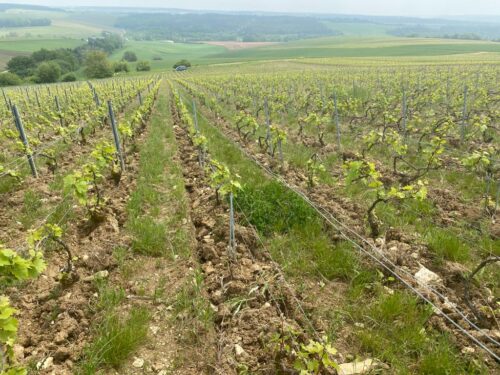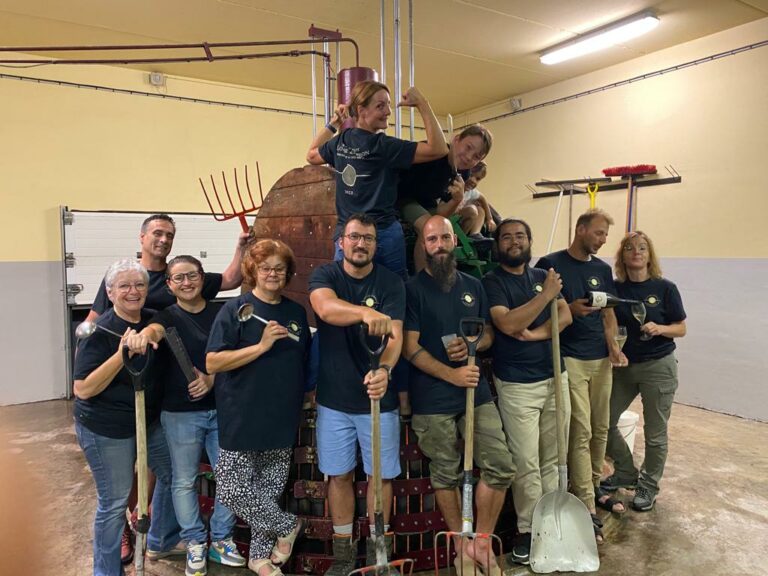
Climatology since Autumn 2023
The weather was very unsettled, with an unprecedented amount of rain in October 2023! This rain was beneficial for rebuilding water reserves, which had been low due to the hot, dry vintages of previous years.
Spring 2024 came early, and from March onwards, the vegetative cycle got underway with a fairly rapid start to activity.
There’s a saying that goes “when the red moon is early in the year, it’s a moon that burns, freezes and then drowns”… A saying that is unfortunately true this year…
The red moon is the first full moon after Easter, so it’s the 28 days after Easter, arriving very early this year, on 31 March. In the Côte de Bar region, the beginning of April was very hot, followed by two days of frost and then 70 millimetres of water in a week!
Two days of frost were recorded on 21 and 22 April, 2024
The first morning resembled a Spring frost, with sub-zero temperatures in the early hours of the morning and dawn, but there was little damage.
Then on 22 April, the frost was more like a winter frost, with cold night-time temperatures lasting 4-5 hours, enough to freeze the buds that had already opened and damage the plant’s tissues.
For the estate, the damage was terrible on the plots in the commune of Couvignon, where the vines are better protected from the wind and planted at the bottom of the plot. The humidity was high and the frost ravaged everything … 100%. Of the 3 hectares, the 40 ares of Chardonnay should yield nothing. We hope that the counter-buds of the Pinot Noir will bear some fruit.
Hopefully on the higher, better-ventilated parcels in Noé les Mallets, located at the top of the slopes, the vines held up well.
And Now ?


In the aftermath of the frost trauma, attention will be redoubled to help the vines avoid wasting their reserves and producing too much, which would be damaging for the following year. Disbudding will therefore be very severe to slow down production and give priority to vegetative development and building up reserves in the future. So this is not a yield year, but rather a year for consolidating the plant.
Disbudding is a manual operation, and 9 people currently work on the estate to carry out the task. A precise selection of buds is made so that only a few are kept. Above, the photo on the left shows the vine before disbudding and the photo on the right shows the vine after disbudding.
Delphine is also very pleased to have started work several years ago on physiological pruning, de-budding, adapting the load to the vigour… all this work provides support to help the plant to produce in a balanced way, to encourage it to set aside time to conserve its energy during violent stresses such as frost, hail or heatwaves, and of course to produce quality grapes.
The frosts also slowed down vegetative development and the vines are currently underdeveloped. This does not prevent maximum protection of the buds and unfolded leaves, as the frequent rainfall and cool temperatures are ideal conditions for initiating fungal development, even if it is slow.
According to Delphine, this vintage looks like 2017, and when you taste the 2017s from Champagne Louise Brison today, you know that you can have great champagnes too!
But these are winemakers’ vintages, so they’re complicated, and you have to pay attention at every stage.
And we have every confidence in the work of our favourite Champagne winemaker :-)

